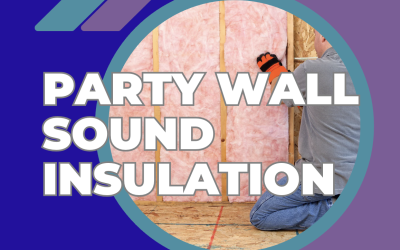When you’re buying a property, there’s one step that can make or break your investment, getting a home survey.
It’s your chance to uncover hidden defects, negotiate repairs, and protect yourself from unexpected costs.
Whether you’re a first-time buyer or adding to your portfolio, having a clear understanding of a building’s condition is essential.
We’ll walk you through 5 essential tips to help you get the best results from your home survey, from selecting the right surveyor to acting on the findings.
1. UNDERSTAND THE DIFFERENT TYPES OF HOME SURVEY
We offer two different types of surveys, a Level 2 (previously referred to as an RICS HomeBuyer Report) or Level 3 (previously referred to as a Full Building Survey).
Both will give you a clear picture of a property’s physical condition. They examine everything from structural issues to damp, roofing, insulation, and general maintenance needs. Think of these as your personal safety net, designed to help you avoid unpleasant surprises after moving in.
NEED HELP DECIDING?
Put simply, both a level 2 and 3 survey will cover all of the same aspects. Both are very detailed reports and in all normal circumstances will give you all of the information you need to make a fully infirmed purchase decision.
However, when directly comparing the two, a Level 3 survey goes into greater detail than Level 2.
2. WORK WITH A QUALIFIED SURVEYOR
Always use a surveyor who is regulated by the Royal Institution of Chartered Surveyors (RICS). This accreditation guarantees high standards, ethical practice, and expert knowledge.
At Stokemont, our surveyors are RICS qualified and experienced across a wide range of property types, from period homes, to modern developments and commercial premises.
3. UNDERSTAND THE SURVEY LIMITATIONS
Even the most detailed survey has limits. Surveyors don’t carry out invasive work, so they won’t lift floorboards or dismantle fittings. Some areas (like roof voids or cellars) may be inaccessible. If anything raises red flags, we’ll advise further specialist inspection.
4. REVIEW THE REPORT CAREFULLY
Once the survey is completed, you’ll receive a comprehensive report. At Stokemont, our reports are easy to navigate, with clear colour coded condition ratings and cost ratings, photographic evidence, and actionable recommendations.
Look out for urgent defects, safety concerns, or anything requiring ongoing maintenance. Don’t just skim it, take the time to read it in full.
Don’t be shy! If anything is unclear, ask! At Stokemont, we offer a post survey support with your surveyor to talk you through the findings and answer any questions. It’s all part of the service.
5. USE THE REPORT TO YOUR ADVANTAGE
If the survey highlights major issues, such as structural cracks, roofing problems, or damp. You may be able to renegotiate the price, or ask the seller to resolve the issues before completion. The survey can often pay for itself in the savings it unlocks.
STOKEMONT’S FINAL THOUGHTS
A home survey isn’t just a formality, it’s your best line of defence against unexpected problems.
It gives you a clearer picture of the property you’re buying and helps you proceed with peace of mind.
At Stokemont, we’ve built our reputation of over 350 five star service reviews based on honesty, precision, and client focused service.
Use our instant quote function to get an instant fixed cost, turnaround time and get it booked in with our local surveyors, taking the next step toward a secure and confident home purchase.




